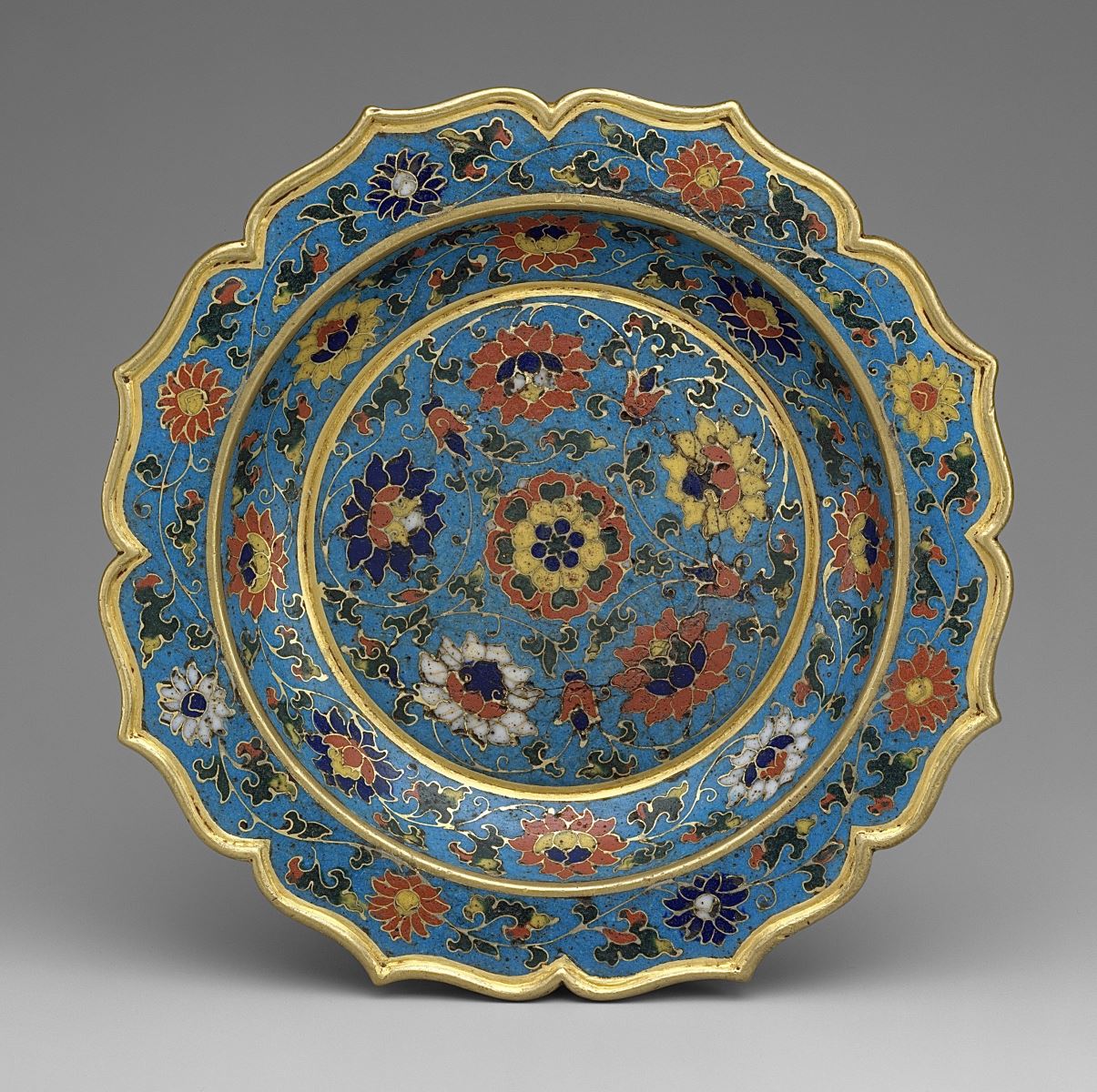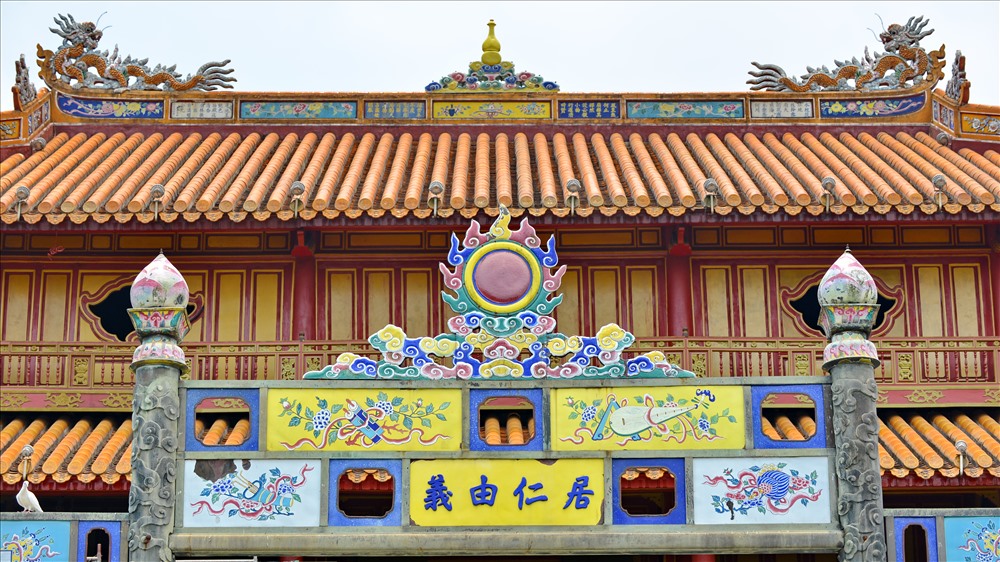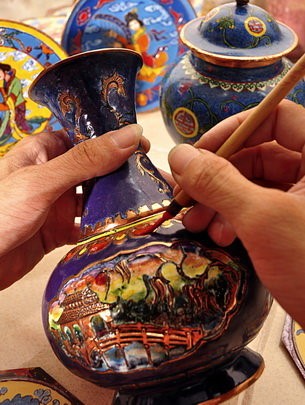- Press
CLOISONNÉ ENAMEL - A LOVE TO PRESERVE AND DEVELOP
Brief overview about the origin and development of enamel art
Enamel art is an ancient craft that can be understood as "coating metal with enamel". The oldest enamel layer was found in the Republic of Cyprus and dates back to the late ancient period of the Byzantine Empire. In Europe, during the Middle Ages, France and Germany had famous enamel crafts villages. In the 17th and 18th centuries, enamel art flourished the most in the UK, France, and Switzerland, especially in the application of luxury watch decorations.

The Staffordshire Moorlands cauldron in Roman England, 2nd century
What does enamel include? What is cloisonné enamel?
Some main types of enamel are Grand Feu, Cloisonné, Grisaille, Champleve, Plique-à-jour, Paillonne, Vallonne... Among them, the Cloisonné enamel technique uses metal wires such as gold, silver, and copper to create decorative patterns. It acts as a barrier between the color areas and then enamel is applied to the areas and finally is polished.

15th century dish with cloisonné enamel from the early Ming dynasty
Enamel in Vietnam. What is "Phap Lam Hue"?
In its 143 years of existence, the Nguyen Dynasty left behind a big cultural heritage of material and non-material values, which is a source of pride for the Vietnamese people. Among these values, there is a type of heritage that contains traditional cultural ideas through materials, and sophisticated and elegant decorative patterns called Phap Lam Hue.

The decorative motifs of the sun, clouds, flowers, and leaves were created using Hue-style cloisonné enamel on the gate of the ceremonial entrance to the Imperial City in Hue
Phap Lam Hue has a high ethnic character, a method of enamel on copper metal, while copper is an architectural material used to decorate palaces or tombs. Objects made from Phap Lam are considered precious antiques. Today, very few artisans still preserve this unique technique, along with Philippe Mark's artisans.

An artisan is painting on copper as part of the process of creating a Phap Lam Hue
Love for national values, particularly for Cloisonné enamel
With a love for art and an appreciation of ethnic values, Philippe Mark's artisans are the successors, the people who inherit the national heritage and want to preserve and develop culture. Along with the development of internationalization, opportunities, and multidimensional knowledge linkage, Philippe Mark's artisans always learn and research the cultural techniques of the international community to integrate and develop into the world. This is the Cloisonné enamel technique.

A craftsman from Philippe Mark is painting enamel onto the dial
Embracing traditional art and advancing to an international level
Absorbing national art, developing international outreach Enamel art appeared very early in the world and is now applied in many fields, but aiming for sophistication and meticulousness in detail, Philippe Mark's artisans apply it in jewelry, watches, and especially watch dials. Cloisonné enamel on the watch dial is a completely distinctive trend in the modern watch industry, as a microcosm that hides a long evolution with different experiences, techniques and even the secrets of a craft.

Philippe Mark PM2705S-002 watch with Cloisonné enamel central dial